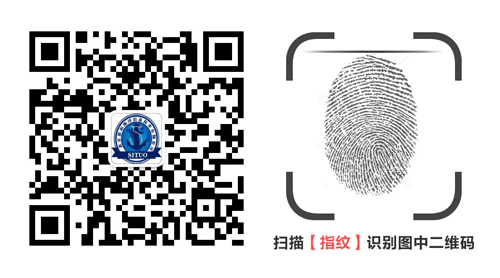电子图书出新通告 (2023.12.22)
发布时间:2023-12-22 16:43:00 访问次数:1398SeaReader电子阅读器为海上使用提供了一个完整的数字海洋技术库。它以易于使用的数字格式提供船上所需的所有书籍。它消除了维护纸质图书馆的相关成本和管理,因为所有数据都始终在容器上。此外,只需单击一个按钮,整个库就可以轻松更新。你甚至不需要在线更新数字图书馆。在船舶检查时,SPICA电子阅读器通过在船上提供所有强制性出版物,使检查变得简单,并确保合规性。有关IMO关于船舶出版物运输要求的更多信息和指南,请阅读(MSC-MEPC.2/Circ.2)
要使用多种数字出版物,请查看我们的软件SeaReader电子阅读器.
书名:Model Course 3.26 Security Training for Seafarers with Designated Security Duties
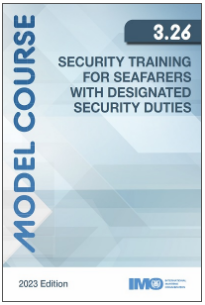
出版社-International Maritime Organization
版本号-2023 Edition
语言- English
书号 -IMOMC326B
This model course is intended to provide the knowledge required for seafarers with designated security duties in connection with a Ship Security Plan (SSP) to perform their duties in accordance with the requirements of chapter XI-2 of SOLAS 74 as amended, the ISPS Code, and section A-VI/6 of the STCW Code, as amended.
Those who successfully complete the course should be able to demonstrate sufficient knowledge to undertake the duties assigned under the SSP.
书名:Model Course 3.25 Security awareness training for all port facility personnel

出版社-International Maritime Organization
版本号-1st Edition
语言- English
书号 -IMOMC325B
This model course is intended to provide the knowledge required to enable personnel without designated security duties in connection with a Port Facility Security Plan (PFSP) to enhance security in accordance with the requirements of Chapter XI-2 of SOLAS 74 as amended, the ISPS Code, the IMDG Code, the IMO/ILO Code of Practice on Security in Ports, and guidance contained in IMO MSC.1/Circ.1341. Successful trainees should contribute to the enhancement of maritime security through heightened awareness and the ability to recognize security threats andrespond appropriately.
书名:Model Course 3.27 Security Awareness Training for all Seafarers, 2023 Edition

出版社-International Maritime Organization
版本号-2023 Edition
语言- English
书号 -IMOMC327B
This model course is intended to provide the knowledge required to enable personnel without designated security duties in connection with a Ship Security Plan (SSP) to enhance ship security in accordance with the requirements of chapter XI-2 of SOLAS 74 as amended, the ISPS Code, and section A-VI/6-1 of the STCW Code, as amended.
Those who successfully complete this course should achieve the required standard of competence enabling them to contribute to the enhancement of maritime security through heightened awareness and the ability to recognize security threats and to respond appropriately.
书名:Ballast Water Management
Understanding the regulations, treatment technologies and practical operation
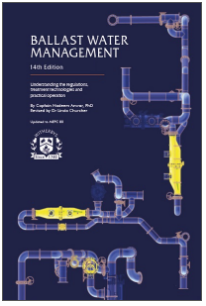
出版社-Witherby Publishing Group
版本号-14th Edition
语言- English
书号 -WPG1400N
This 14th edition has been fully revised to reflect current requirements in the management of ballast water since ratification of the BWM Convention.
To assist ship owners with compliance, it sets out national and international ballast water legislation as well as Port State Control and ship administration requirements.
It includes practical considerations relating to system selection, installation/retrofitting, onboard operation, maintenance, monitoring and reporting.
This publication provides up-to-date guidance on BWM regulations and equipment options and will assist ship owners with transition to full compliance with the BWM Convention.
It looks in detail at the various treatment systems and technologies, significant components and the implications for onboard operation, maintenance and contingency measures.
Since 28th October 2020, only BWMS holding a revised 2016 G8/BWMS Code certificate have been permitted to be installed. The book provides an extensive set of data sheets on systems that have been type approved through the USCG and BWM Convention testing procedures. These summarise the treatment technology, type approval certification and system design limitations, so that ship owners can evaluate different systems and make an informed decision before purchasing.
The Appendices contain an updated list of IMO Guidance Documents for the BWM Convention. They also describe key invasive species and illustrate native and invasive geographic ranges. A set of technical diagrams is also provided showing an example technical layout of a BWMS.
书名:The Pilot Ladder Manual
Incorporating Pilot Transfer Arrangements including Combination Ladders
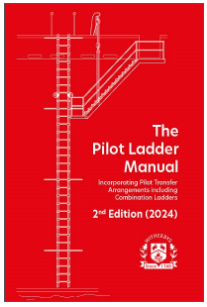
出版社-Witherby Publishing Group
版本号-2nd Edition (2024)
语言- English
书号 -WPG0201B
This publication details the rules, regulations and procedures that should be followed when preparing for pilot embarkation and disembarkation. It includes relevant excerpts from SOLAS regulations and IMO resolutions. The text is supported by explanatory photographs and diagrams that demonstrate good and bad practice.
This second edition supersedes both the basic and advanced editions of Pilot Ladder Manual.
This publication provides ship Masters and crew with a comprehensive understanding of the equipment, safety requirements and regulations necessary to conduct a proper risk assessment of pilot transfer operations.
Topics covered include the responsibilities of all personnel involved in pilot transfer, ladder construction and combination ladders, and examples of inadequate securing of a ladder. The guide explains the technical details of carrying out pilot transfer operations and includes important safety observations and comments. It includes text of SOLAS V, Regulation 23 Pilot Transfer Arrangements, IMO Resolution A.1045(27) on Pilot Transfer Arrangements, the UK Code of Safe Working Practices for Merchant Seafarers and the ISO 799 requirements for pilot ladders.
Throughout the world, at any time of day or night, in good or adverse weather conditions, a number of marine pilots will be in transit either to or from vessels that they have been engaged to safely navigate from one location to another. Each of these pilots will need to be safely embarked or disembarked from their vessel. There are a number of ways in which this transfer operation can be completed, each involving a certain degree of risk.
It is critical that all involved in pilot transfer are fully aware of the dangers that exist. Only through effective training and education can pilot transfer operations be made safer, irrespective of the transfer method used.
Pilot embarkation and disembarkation normally take place when the vessel is underway or alongside a berth, but may also take place when the vessel is at anchor. Possible transfer methods include by pilot boat, helicopter or directly from the shore. Transfer may be facilitated by the vessel's accommodation ladder, gangway or vehicle ramp, or possibly by crane basket. However, the most common method is by traditional wooden pilot ladder, and this method of transfer is the main focus of this publication.
Despite the best efforts of the International Maritime Pilots' Association (IMPA), various regional and national pilot associations, and the International Maritime Organization (IMO), there continue to be far too many reports of poorly rigged or unsafe pilot ladders. In recent years, a significant number of pilots have been fatally or seriously injured as a direct result of accidents occurring during embarkation or disembarkation.
IMPA represents the international community of marine pilots and as such promotes effective safety outcomes in pilotage. Periodically, IMPA conducts safety campaigns which collate details of pilot transfer compliance in accordance with internationally agreed standards.
The aim of this publication is to remind all in the maritime industry of the vital importance of adhering to the rules and established procedures when preparing for embarkation and disembarkation of pilots.
书名:Cyber Security Workbook for On Board Ship Use - 5th Edition 2024

出版社-Witherby Publishing Group
版本号-5th Edition 2024
语言- English
书号 -JOV2000E
This practical and easy to understand workbook supports the owner, Master and the ship's crew with cyber security risk management.
It contains comprehensive checklists to assist with the day-to-day management of onboard cyber security and facilitates collaboration between ships, onshore IT departments and equipment manufacturers.
Cyber risk management should be an inherent part of safety and security and should be considered at all levels of the company, including senior management ashore and onboard personnel.
This workbook provides practical guidance for ship (Part One - Onboard Practical Considerations) and shore (Part Two - Shore Management Considerations), including technical departments, IT departments and equipment manufacturers. It is aligned with IMO Resolution MSC.428(98) and will also be useful to the wider maritime industry.
The fifth edition has been produced and supported by BIMCO and International Chamber of Shipping (ICS).
It contains updated information on current threats and includes new topics such as the tools available to detect malware, process for hardening a computer, risks to Voyage Data Recorders (VDR), example of Intrusion Detection Systems (IDS) applied to NMEA messages, explanation of the Endpoint Detection and Response (EDR) tools, etc.
New detailed case studies illustrating cyber risks in a memorable fashion have been added. There are 14 checklists and 7 annexes, including risk assessment and how to create a cyber security plan.
Foreword
Harvesting the full potential of data gathering with the implementation of digital technologies and improved connectivity can certainly bring commercial benefits. However, in parallel, cyber criminals are refining their methods and developing techniques that cause disruptions to business and create hazardous situations for ships, their crew, the environment and the cargo.
Building on the latest Guidelines on Cyber Security Onboard Ships (version 4), the Cyber Security Workbook for On Board Ship Use goes one step further and translates the high-level guidelines into operational tools and checklists for use on board ships. The Workbook is an indispensable complement to the Guidelines and is highly recommended reading for ship officers and shore staff with a cyber security risk management role.
David Loosley
Secretary General and CEOBIMCO
Cyber attacks are on the rise, with criminals and State actors all setting their sights on shipping. This is a threat we cannot ignore. Our vessels have become more technologically advanced, with the growth of the Internet of Things and our shipboard systems increasingly connected to the internet and to systems ashore. Today?s modern ships are a target-rich environment for cyber attackers. A number of high-profile incidents on major shipping companies in recent years have demonstrated the serious potential for major disruption to operations and safety for maritime trade. It is essential that shipping remains resilient against these threats if it is to continue to carry the vast bulk of global trade safely and securely.
Awareness of the threat presented by cyber attack to shipping has increased, as have the mechanisms to reduce it. The IMO requirement to include cyber risk management in the Safety Management System from 1st January 2021 has brought cyber risk management into the statutory realm. Class and insurance requirements now also play a role in maintaining the cyber security of ships. Today, the shipping industry is better placed than ever to safeguard the vital service it provides from cyber attack. However, we should not grow complacent; regular risk assessments of your company?s cyber weak spots, training and awareness campaigns for staff and plans for recovery if a cyber attack occurs are all essential to stay resilient to the ever-changing threat landscape.
Cyber security is central to the safe and secure operation of ships and shipping companies, and this guidance provides a comprehensive resource to understand the threat practically and continually mitigate against the risks it presents to maritime transport.
Guy Platten
Secretary General
International Chamber of Shipping
书名:Guidance Manual for Tanker Structures - Consolidated Edition 2024
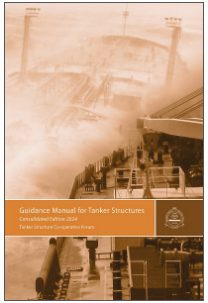
出版社-Tanker Structure for Co-operative Forum
版本号-2024 Edition Consolidated
语言- English
书号 -TSCF0001H
This consolidated edition combines in one guidance manual the various sources of information necessary for assessing the condition of the ballast tanks, cargo tanks and structure of tankers in service.
While the original manual mainly addressed the conventional single hull tanker, this revision includes IACS Recommendation No. 72: Confined Space Safe Practice Rev.3 Dec 2018 and IACS Unified Requirements (UR) Survey and Certification: Z10.4 Hull Surveys of Double Hull Oil Tankers (Rev.18 Feb 2023), where changes introduced in Rev.18 are to be uniformly applied by IACS Societies for surveys commenced on or after 1 July 2024. Phase-Out of Single Hull Tankers.
Since 2016, single hull tankers (SHTs) have been phased out of international trading. Since 1993, double hull structures are the mandatory standard for tanker design, as detailed in the 1996 requirements of MARPOL Annex 1, Regulation 19. Phase-Out Process.
Following a series of high profile tanker accidents and spills in the 1990s, MARPOL was amended to begin the process of a gradual phase-out of SHT, with timings based on tanker category.
Due to the impact of the sinking of the 'MV Erika', the IMO adopted an accelerated phase-out scheme, which entered into force on 1 September 2003, under the 'Regulation 13G' amendments of MARPOL Annex 1. The phase-out process was further accelerated by additional amendments that entered into force on 5 April 2005 (note that Regulation 13G is now incorporated as Regulation 20 in the revised MARPOL Annex I).
Under MARPOL, the final phasing out date for Category 1 tankers (pre-MARPOL) was 2005. The final phasing out date for Category 2 and 3 tankers (MARPOL tankers and smaller tankers) was brought forward to 2010, from 2015. In addition, a new Regulation (Regulation 21) for vessels carrying heavy grade oil (HGO) banned the carriage of HGO in SHT of 5,000 tons dwt and above after 5 April 2005, and in SHT of 600 tons dwt and above, but less than 5,000 tons dwt, by not later than 2009. Exceptions from 2010.
1. If the vessel was engaged in cabotage trade i.e. trading locally and not internationally (the IMO extended this option to allow for some member States to achieve renewal for their domestic fleets, where the vessels were confined to operate only within the member State).
2. Theoretically, if the vessel was engaged in trade between States where neither were signatories to the MARPOL 1973/1978 Convention (although this is effectively nil, as 99.1% of world tonnage is under a Contracting State that has ratified MARPOL).
3. If the vessel was not engaged in the carriage of oil (provided that the ship was in service on 1 July 2001, fitted with only double bottoms or double sides that extend to the entire cargo tank length or double hull spaces, not meeting the technical minimum distance protection requirements and that the flag State was satisfied. Again, such continued operation cannot go beyond the date on which the ship reaches 25 years of age after the date of its delivery).
4. If the vessel operated under the Condition Assessment Scheme (CAS), as approved in IMO Resolution 94(46). However, such operation is now phased out.
Only Very Limited Numbers Remain.
The number of SHT vessels remaining in the world is, therefore, very low. Those that do remain are strictly limited in their trading and operational abilities to within the national boundaries of their member State, and to those not carrying oil cargoes (subject to the other requirements specified above). The few member states still operating SHTs, have already begun the process of full phase-out in their national legislation. Double hulled vessels are, therefore, effectively considered the universal standard for new and existing tankers in international maritime operations.
书名:INTERTANKO Seafarers' Practical Guide to SIRE 2.0 Inspections

出版社-INTERTANKO
版本号-1st Edition - 2023
语言- Spanish
书号 -INT5800A
The purpose of this Guide is to assist staff and operators serving on board oil, chemical and gas tankers to prepare for a vessel's SIRE 2.0 ship inspection by providing a greater understanding of the requirements of the SIRE 2.0 questionnaire.
This Guide should be used in conjunction with the latest OCIMF-SIRE 2.0 Question Libraries.
The Seafarers' Practical Guide to SIRE 2.0 Inspections has been written for all Officers and crew on board to enable them to better understand the content and requirements of the SIRE 2.0 Vessel Inspection Questionnaire.
This publication follows each chapter of the SIRE 2.0 Inspection Questionnaire and provides guidance on the responsibilities for each question. The guide compiles and summarises the inspection guidance, the suggested Inspector actions, the expected evidence and the potential grounds for a negative observation for each and every question as they are outlined in the OCIMF question libraries.
The purpose of this guide is to assist staff and operators to prepare for a vessels SIRE 2.0 ship inspection.
The importance of consistently successful ship inspections cannot be understated for, without these, vessels will find it extremely difficult to trade. Good and thorough preparations will not only show an Inspector the competency and professionalism of the crew, but also how well the vessel is managed.
OCIMF introduced SIRE 2.0 as a risk-based vessel inspection programme which will supersede the traditional SIRE programme as launched in 1993. The new approach has resulted in a new questionnaire focussed on equipment, procedures, and human factors, with SIRE 2.0 inspections on board tankers to be conducted by trained and accredited OCIMF Inspectors using a certified web-enabled tablet.
The SIRE 2.0 introduces new terminology and both operators and crew are encouraged to familiarise themselves with the training resources, which are available on the OCIMF website. INTERTANKO Members, as well as the Secretariat, have been actively engaged, and instrumental, in the trial inspections and phased implementation plan of SIRE 2.0.
This publication follows each chapter of the SIRE 2.0 Inspection Questionnaire and provides guidance on the responsibilities for each question. Each ship owner, ship management company/operator or technical manager should, under their own Safety Management System (SMS), have their own allocations of such responsibilities on board.
Those on board at the forefront of the inspection will usually be the Master, Chief Officer, Chief and 2nd Engineers, referred to as 'Senior Officers'. It should be recognised that underperformance from junior Officers and any other member of the crew could result in a negative observation and such comments could result in the vessel potentially failing a clearance process. It is noteworthy to mention here that SIRE 2.0 also provides the Inspector the possibility to raise a positive observation under the human element response tool where the crews performance exceeds normal expectations.
Questions are often directed to those Officers/personnel with direct responsibility or who are involved in the operation/ process being examined. A considerable number of questions are directed to the 'accompanying Officer', thus it is of utmost importance that the Officers accompanying the Inspector in each department are well versed with the procedures on board. For example, when a cargo operation is carried out, which, in general, involves all Deck Officers, and at times on certain vessels an Engineering Officer or Gas Engineer, then all of those Officers involved should be expected to be interviewed and thus have knowledge of the relevant question being asked.
Although the SIRE 2.0 questionnaire distinguishes between Core, Rotational 1 and Rotational 2 questions, it is of utmost importance that seafarers are able to answer every question relevant to their type of vessel as the CVIQ is compiled using an algorithm which is automatically issued to the Inspectors tablet. The Core questions will be asked during each inspection, but neither operators nor seafarers will have knowledge of which rotational questions will be asked ahead of the inspection.
Knowledge of legislation, as well as the contents of documents and publications as identified in the OCIMF question libraries, forms a vital part of demonstrating the understanding of each question within the SIRE 2.0. In the publication at hand, the authors have compiled and summarised the inspection guidance, the suggested Inspector actions, the expected evidence and the potential grounds for a negative observation for each and every question as they are outlined in the OCIMF question libraries.
INTERTANKO has provided a means of reporting Inspector behaviour in a confidential manner in order to ensure continuous improvement of ship inspections and inspection procedures for its Members. The reporting system has been developed in an electronic format which allows the reports to be submitted directly into a database. In view of the confidential nature of this system, a username and password, which can be obtained from INTERTANKO, is required to upload reports - please email marine@INTERTANKO.com to obtain your username and password.
This Guide should be used in conjunction with the latest OCIMF-SIRE 2.0 Question Libraries.
更多信息请联系:
北京思拓海洋信息技术有限公司
北京市丰台区汽车博物馆东路6 号院盈坤世纪大厦 F 座 512室
电话:010 62680730
传真:010 62681683
邮箱:sales@enclive.cn
